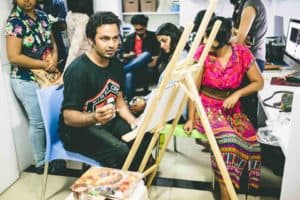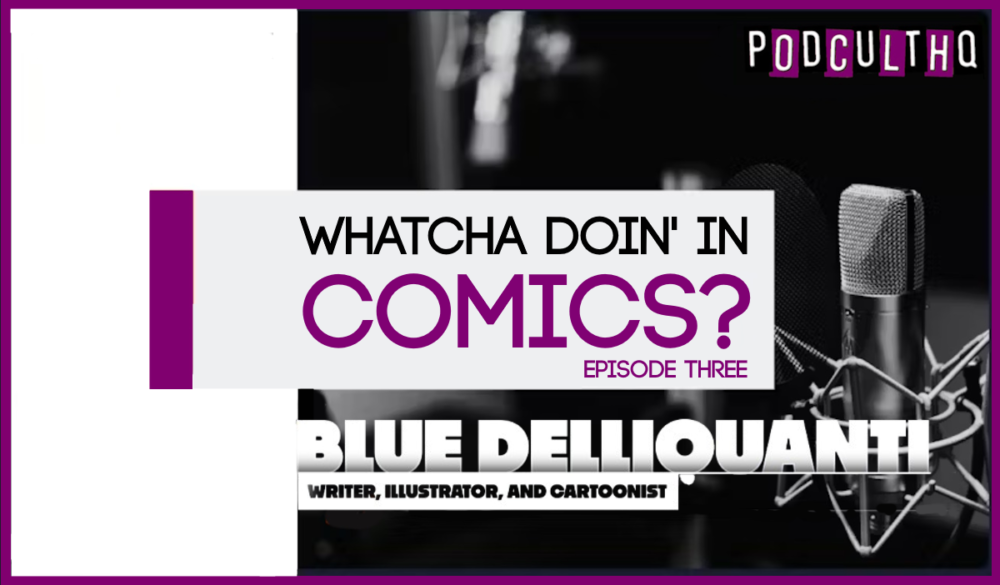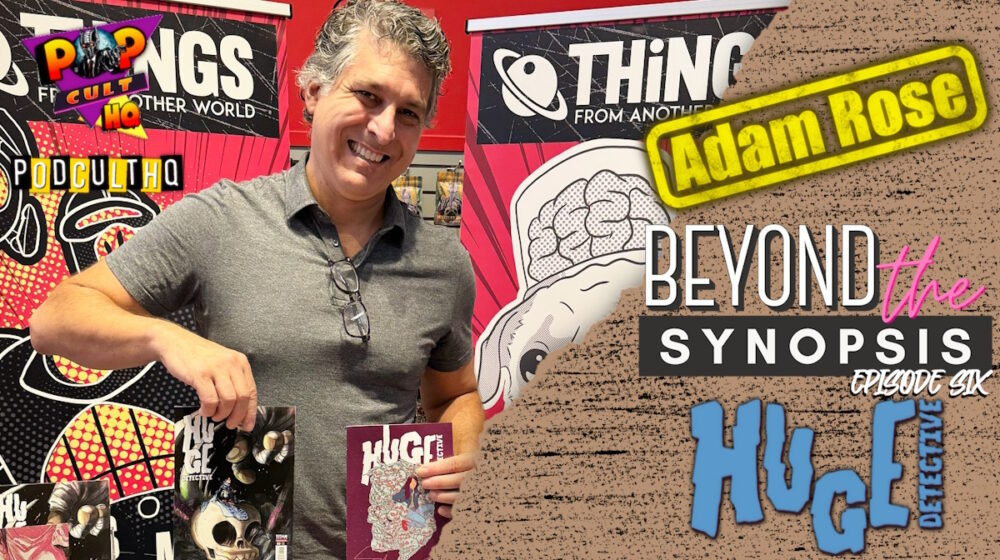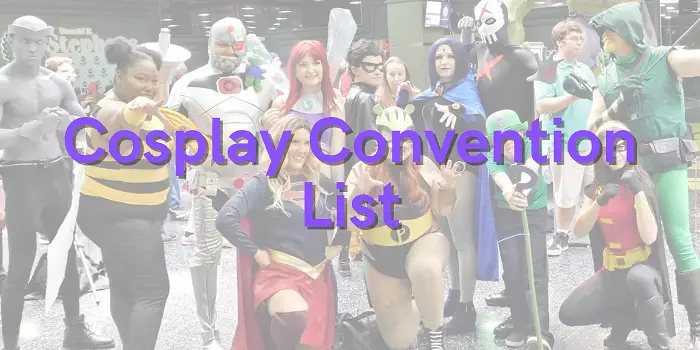Ram Venkatesan is an author and comic book writer I came in contact with at the end of 2016 thanks to a comic book review I conducted for PopCultHQ on his miniseries BRIGANDS from Action Lab: Danger Zone. Looking back over our conversations in Facebook Messenger, we’ve discussed the BRIGANDS title, his self-published BLACK MUMBA graphic novel (which I’m looking forward to reviewing once it solicits), distribution issues, and other general banter (The Rock, emojis, anything goes!).
<PopCultHQ’s Spoiler-Free Comic Book Review: ‘BRIGANDS’ #2 from Action Lab: Danger Zone>
<PopCultHQ’s Spoiler-Free Comic Book Review: ‘BRIGANDS’ #3 from Action Lab: Danger Zone>
 Shortly after Emerald City Comicon, near the beginning of March 2017, I noticed Ram had posted on Facebook about a crowdfunding project of which he was a part entitled GRAFITY’S WALL. I was intrigued by a couple things regarding his upcoming title: first, the online campaign with Unbound had similarities to normal comic book Kickstarters but offered some unique and appealing dynamics, in where Unbound is responsible for publishing the book and that it’s an ongoing campaign rather than a limited 30-day campaign (or similar). The other facet of GRAFITY’S WALL that intrigued me was that the project was a story encompassing Mumbai street culture and featured creators and artwork from India. Not only did this appeal to me, it made me curious about comic creators from the region, as there isn’t much exposure in the US comic scene from that part of the world. After giving Ram a heads-up that I was planning on writing up a feature on his current crowdfunding campaign, the cool-as-hell writer responded by sharing his personal desire to help “…bring talent and art from India into the more visible comics industry in the US and UK.”
Shortly after Emerald City Comicon, near the beginning of March 2017, I noticed Ram had posted on Facebook about a crowdfunding project of which he was a part entitled GRAFITY’S WALL. I was intrigued by a couple things regarding his upcoming title: first, the online campaign with Unbound had similarities to normal comic book Kickstarters but offered some unique and appealing dynamics, in where Unbound is responsible for publishing the book and that it’s an ongoing campaign rather than a limited 30-day campaign (or similar). The other facet of GRAFITY’S WALL that intrigued me was that the project was a story encompassing Mumbai street culture and featured creators and artwork from India. Not only did this appeal to me, it made me curious about comic creators from the region, as there isn’t much exposure in the US comic scene from that part of the world. After giving Ram a heads-up that I was planning on writing up a feature on his current crowdfunding campaign, the cool-as-hell writer responded by sharing his personal desire to help “…bring talent and art from India into the more visible comics industry in the US and UK.”
It was at that moment something within me was triggered and I became excited about the opportunity to walk alongside Ram in raising awareness of, and putting a spotlight on, comic creators from India. Throughout my interactions with those in the indie comic scene (creators, publishers, promoters), I’ve found that there is an incredible resource pool across the globe of talented individuals. Along with that comes a varying degree as to their exposure; some have their work picked up by an indie publisher (mostly US or UK-based, but there are others) which leads to their increased recognition and acceptance into the indie community, others simply must work their asses off in hopes of garnering some attention and acknowledgment.
 We at PopCultHQ will always #SupportIndieComics and #SupportIndieCreators and this spotlight offered today is fundamentally based on that – to share with the world the incredible talent and remarkable individuals in the indie comic book community. You will likely never find me doing a spotlight interview or feature on, say, Todd McFarlane or Jim Lee, for example. Not that I have anything against them, quite the contrary. I have great respect for both and other similar creators, but they don’t need to be featured in an article to “learn more about them.” Their names are recognizable already throughout the industry. I want to put the spotlight on creators who self-publish, have a few books out by indie publishers, or those who may not have a published work to their résumé. Though I’m only one person, I will always try to do what I can to help (even in the slightest bit) in increasing a creator’s exposure, spreading the word on them and their craft, and doing my part in hopefully bring them closer to becoming as recognizable as McFarlane or Lee.
We at PopCultHQ will always #SupportIndieComics and #SupportIndieCreators and this spotlight offered today is fundamentally based on that – to share with the world the incredible talent and remarkable individuals in the indie comic book community. You will likely never find me doing a spotlight interview or feature on, say, Todd McFarlane or Jim Lee, for example. Not that I have anything against them, quite the contrary. I have great respect for both and other similar creators, but they don’t need to be featured in an article to “learn more about them.” Their names are recognizable already throughout the industry. I want to put the spotlight on creators who self-publish, have a few books out by indie publishers, or those who may not have a published work to their résumé. Though I’m only one person, I will always try to do what I can to help (even in the slightest bit) in increasing a creator’s exposure, spreading the word on them and their craft, and doing my part in hopefully bring them closer to becoming as recognizable as McFarlane or Lee.
So with that being said, I had the privilege of interviewing not only Venkatesan, but also a Mumbai-based artist working with Ram on GRAFITY’S WALL, Anand Radhakrishnan. Without further ado, PopCultHQ would like to share with you our interview with two gifted individuals in the indie scene
~~~~~~~
PopCultHQ’s Interview w/ Comic Creators
RAM VENKATESAN & ANAND RADHAKRISHNAN
PopCultHQ: The two of you have worked with one another on some projects. To establish some background, how did the two of you first connect (for BLACK MUMBA, I believe)?
 Ram V.: That’s right. We connected for Anand’s work on the cover of BLACK MUMBA. I remember first hearing about Anand’s work through friends in Delhi. They were part of a comic creators group and they’d invited Anand over for a meet. So I followed his work from there and was completely enamoured with his art. I pinged him on Facebook. We talked about working together and I think that conversation went well. Anand did a fabulous job on that cover and since then we’ve collaborated on more covers and a short painted comic that we did for Save Our Souls Magazine in UK. We’ve pretty much worked on one thing or the other, non-stop since then. I think Anand and I are almost always on the same wavelength so it’s always a great experience working with him.
Ram V.: That’s right. We connected for Anand’s work on the cover of BLACK MUMBA. I remember first hearing about Anand’s work through friends in Delhi. They were part of a comic creators group and they’d invited Anand over for a meet. So I followed his work from there and was completely enamoured with his art. I pinged him on Facebook. We talked about working together and I think that conversation went well. Anand did a fabulous job on that cover and since then we’ve collaborated on more covers and a short painted comic that we did for Save Our Souls Magazine in UK. We’ve pretty much worked on one thing or the other, non-stop since then. I think Anand and I are almost always on the same wavelength so it’s always a great experience working with him.
Anand R.: The BLACK MUMBA cover was a trip for me and right up my alley. At the time I had recently completed my post graduate program and was looking for a break into comics and book covers. Ram was an absolute pleasure to work with and highly professional so the progression to the next project was only natural. At the moment, we are working on at least 3 ongoing projects together and they all belong to different genres, exciting stuff!
PCHQ: Can you take us through the journey of your initial meeting up to the point where you collaborated again for this incredible project in GRAFITY’S WALL? Ram, did you know going in you wanted Anand to illustrate your story? Anand, how did you feel about taking on graphic novel of this size, your first at that?

Ram: Well, leading on from the previous answer…Anand and I tabled together at the Comic Con in Mumbai last year. I think after the convention we were at a bar with letterer, Aditya Bidikar. And it was Anand that brought up the idea of wanting to do something set in Mumbai. He said he was itching to draw something set in the city. Something a bit closer to reality. And I’d had this idea about a Mumbai kid runnning around the city tagging walls with graffiti ever since I attended a talk street-art in London. So the two things seemed to fit together nicely. Then at Thoughtbubble, Lizzie from Unbound asked me if I had any projects I was working on that might fit their tastes. And a few months later, here we are crowdfunding GRAFITY’S WALL at Unbound.
Anand: I couldn’t turn down a project about Mumbai considering I have grown up here and have been wanting to draw it for a while. Doing a 150 page book as my first full-length graphic novel project does seem intimidating but I have been working on it in batches and trying not to think about how much work will have to go in it haha. Plus Ram and Aditya have been super helpful and guiding me through the process of making comics. Having said that, I enjoy drawing every page immensely and am very excited to share more.
Check out the crowdfunding campaign for GRAFITY’S WALL
PCHQ: GRAFITY’S WALL explores a number of topics like love, violence, gangs, drugs, art, street culture, and more. This can really be seen as a view into Mumbai’s climate. But for most comic fans, readers, and collectors, which many across the world are not exposed to life in India, how will GRAFITY’S WALL reach out and make that connection with them? What is it in the story and in the art that you both hope the reader will walk away and take with them?
Ram: You’ll hear me say this in the video but I truly do believe that stories on a fundamental level are universal. Everyone understands things like ambition, the need for expression, the crushing fear of failure, the oppression of poverty. These are things that people experience across societies and borders. And reading in itself is an empathetic act. i.e. the readers want to come along for the ride. They want to believe you and experience the things you want them to experience.
 So the challenge really is to present the story in a way that makes it possible for the reader to connect easily and readily. With BLACK MUMBA, that familiar trope of ‘Crime Noir’ was a window through which the reader could see and experience a place that wasn’t necessarily familiar to them. With GRAFITY’S WALL – it’s the coming of age story. We’ve all experienced those difficult teenage years. That time when you’re no longer shielded from reality, where you make difficult choices with regards to your own innocence. We’ve all misbehaved, we’ve all sought forgiveness. So that becomes a way to connect with the characters even if you’re not familiar with where they live or what they do.
So the challenge really is to present the story in a way that makes it possible for the reader to connect easily and readily. With BLACK MUMBA, that familiar trope of ‘Crime Noir’ was a window through which the reader could see and experience a place that wasn’t necessarily familiar to them. With GRAFITY’S WALL – it’s the coming of age story. We’ve all experienced those difficult teenage years. That time when you’re no longer shielded from reality, where you make difficult choices with regards to your own innocence. We’ve all misbehaved, we’ve all sought forgiveness. So that becomes a way to connect with the characters even if you’re not familiar with where they live or what they do.
The art has a huge role to play in this, of course. Over to you, Anand.
Anand: Completely agree, most things that this book is about are universal. Also I think, art in general helps making that connection between reader and creator, no matter what their background, ethnicity or location is. For example, when I draw Grafity jumping across a fence and trying to outrun a big policeman, or Jay changing character in front of his parents, the reader has seen it before and knows what’s going on. The tiny details don’t matter at that point. Of course when I do make references to history or to popular culture that readers outside of Mumbai might not get, I intend to make it at least interesting enough to look at haha
<Action Lab: Danger Zone Writer Ram V Launches GRAFITY’S WALL w/ Crowdfunding Publisher Unbound>
PCHQ: Can you both describe for us what Mumbai’s street-culture looks like? What’s socially acceptable, how does the community engage or respond, and what notable features stand out and perhaps are only found in India? How does this lifestyle or culture compare against other cities and nations?
Ram: There are commonalities of course. So we won’t discuss those. The first thing that strikes you is the lack of boundaries and a refusal to understand the idea of personal space. I can see how those sound like bad things but there is a beauty to unmanicured, brazen friendliness. But really, I believe that people make a place. I mean, it’s great fun going out and looking at castles and museums and visiting landmarks but it is at the intersection of such spaces and the people who populate them – that’s where the real personality of a city lies. And in a place like Mumbai that personality is out in the open, in your face. You don’t have to go looking around for the Mumbai experience. It’s all there and you’re wading in it the moment you step into the city. So that’s something, I think, you’ll see reflected in the visuals of the story.
 What’s also happening is that India and so Mumbai is growing, socially. It’s changing and part of that change is the the ability to reach out and experience things across cultures. There are kids in hoodys [sic] on Mumbai streets rapping about growing up rough. There’s a dialogue about racism and bigotry in a country that fought against it a few decades ago and I see a love for art and an underground culture building around it in a place where art and literature were often reserved only for the affluent.These are all things reflected in Mumbai’s street-culture and I think that makes it a very exciting and vibrant place.
What’s also happening is that India and so Mumbai is growing, socially. It’s changing and part of that change is the the ability to reach out and experience things across cultures. There are kids in hoodys [sic] on Mumbai streets rapping about growing up rough. There’s a dialogue about racism and bigotry in a country that fought against it a few decades ago and I see a love for art and an underground culture building around it in a place where art and literature were often reserved only for the affluent.These are all things reflected in Mumbai’s street-culture and I think that makes it a very exciting and vibrant place.
Anand: As far as the street culture goes, what I love about Mumbai is the fact that it is bold and unrepentant. The street signs are bright and colourful and hand lettered, the movie posters are laboriously hand-painted in vivid and saturated colours. You will see typography everywhere, a lot of it in Devanagari, the script that Hindi, Marathi and other Indian languages use. Political posters and slogans are lettered and painted on walls directly and expertly by painters. It’s quite amazing. It’s cool without knowing that it is cool and that makes it so much cooler.
What boggles my mind really is how much street culture has come from our history as a British and Mughal colony, poetry slams held in marathi during Ganesh festivals, street plays etc. What is also interesting is the hip hop/graffiti scene which seems to be adopted from the west is slowly mixing with the local culture to birth something completely new. This is what blows my mind.
PCHQ: How prevalent are comic books and comic book-based or licensed properties in Mumbai? On that same topic, how much interest is there from residents from not only there, but all of India in being involved in the comic book industry, be it as a writer, artist, heck even publishing?
Ram: I think these are two different things. There’s a lot of interest in comics. There are a lot of readers too. We’re the second largest English speaking country in the world. So comics from the US and UK also tend to have a fairly large readership in India and India’s had it’s own rich history with locally created comics too. But availability and distribution are difficult things. Often there isn’t a clear vision when it comes to publishing comics in India. Most publishers are also fans and while that’s a good thing in many ways, it’s not such a great thing when it comes to making publishing decisions about how you want to make comics. Similarly with comics retail, it’s usually a labour of love but there isn’t much organisation or any kind of support structure from the ‘industry’ as a whole.
But the important things are there. Readers and creators. The rest will come.

Anand: I grew up reading local comics so yes there is definitely a big impact of comics produced within India. As Ram says, the comics community is small and scattered in the country and hasn’t formed an effective network of retailers and distributors yet. But I see a lot of interesting content being created by indie publishers/creators and it’s all just a matter of time.
I think another factor is the Indian middle class is getting richer and has more money to spend on comics/films/entertainment in general which in recent years has translated to a major boom in the film/comics and animation industries. So yeah things are looking good and it’s all very exciting.
PCHQ: What is the biggest obstacle as a comic creator in India?
Ram: The biggest thing I noticed when I moved to the UK was that creators were welcoming. Some of them were hugely popular names, others have been doing good work, quietly. But they were all welcoming and supportive of a newcomer like me. They were open with their advice and very supportive when things were tough. That, more than anything else, gave me a lot of encouragement.
 I find this to be sorely missing in India. Creators seem more interested in being protective of their work and success rather than being generous with their time and ideas. I fully appreciate this might not always be possible, but the sense of comics being a community is very strong in the UK and the US. And I think that is missing in India, where it could be an incredible resource and support structure for people who’re just starting out as creators.
I find this to be sorely missing in India. Creators seem more interested in being protective of their work and success rather than being generous with their time and ideas. I fully appreciate this might not always be possible, but the sense of comics being a community is very strong in the UK and the US. And I think that is missing in India, where it could be an incredible resource and support structure for people who’re just starting out as creators.
Anand: Adding to what Ram has said, sequential art is not taken seriously enough to be taught in any of the art schools in India, which results in lack of awareness and expertise among artists/creators and that in turn results in decrease in the level of quality overall.
Another factor from the artist’s POV is the inability of publishers to match international page rates, some even paying a quarter (or less!) than what is expected overseas.
PCHQ: Anything else you’d like to share? Upcoming projects, appearances, ways people can follow you on social media? (Social media accts. can be found at the end of the interview)
Ram: I’ve got a few things out this year. The BRIGANDS trade comes out in April – pick up, pick up. BLACK MUMBA goes into solicits at Diamond UK this April as well. The second arc of BRIGANDS should be announced soon. I’ve got an unannounced sci-fi project out later this year. And Anand and I are working on something exciting as soon as we finish GRAFITY’S WALL – sci-fi + music based comic!
I’ll also be at Thoughtbubble and ICE Birmingham this year so if you’re in the neighbourhood, drop in and say hi!
Anand: While I draw GW I will also be painting a series of covers for Ram’s BRIGANDS. Running parallel to the crowdfunding campaign for GW are a number of social meets, workshops and demos across Mumbai/India to spread the word. I will also be painting backgrounds for an animated film and starting work on some music-related illustrations in the near future, album covers, posters, etc.
~~~~~
A very special thanks to Ram and Anand for partaking in this interview. We hope that you’ve gained some insight into the indie scene from India, a better look into Mumbai culture, that you would check out their title GRAFITY’S WALL, currently on Unbound.
To see more from Ram and Anand,
be sure to follow them online!
`
`
–
`
`








